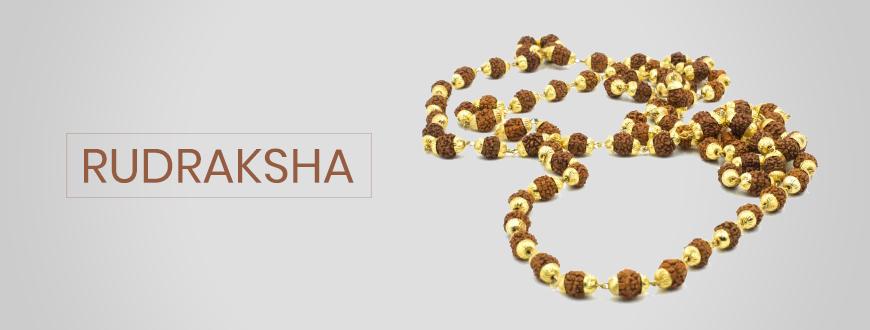Kalyan Wiki

rudraksha
Rudraksha is the common name given to the seed of an evergreen tree known as Elaeocarpus ganitrus. It’s a gigantic tree that grows to 60 – 80 feet in height and is found in the foothills of the Himalayas in India. Rudraksha trees can also be seen in Nepal, Indonesia, New Guinea, Australia, Guam, Hawaii, China, Taiwan, and Malaysia. The seeds of Rudraksha trees turn blue when they are fully ripe and are hence known as blueberry seeds. Rudrakshas may be found in different colors like white, red, brown, yellow and black, brown is the most common color.
In Hinduism, Lord Shiva's devotees consider Rudraksha as sacred as it is believed to have originated from the third eye of Lord Shiva. ‘Rudra’ is a name given to Lord Shiva while the term ‘aksh’ refers to eyes or tears. Rudraksha beads are connected with silk or cotton threads to form a chain, which is then used to count sacred mantras. Apart from chains, Lord Shiva devotees use this bead in the form of bracelets and pendants as well.
Rudrakshas may have one to twenty one segments on it, known as mukhis or faces. 80% of the stones are four, five or six mukhis, of which five are the most commonly found Rudraksha. One Mukhi is a rare kind of Rudraksha. These days, there are plenty of fake Rudrakshas available in the market, so it is necessary to be careful while buying one. A glance through a magnifying lens may give some information about the authenticity of the stone. The grooves in original Rudrakshas are seen to be messy with no precise cuts. So, if the cuts are clean, the Rudraksha is possibly fake. X-ray tests are also performed to check if various chambers inside the seed are intact and equal in size. Authentic Rudrakshas have great religious and cultural significance and form an integral part of Indian culture.







